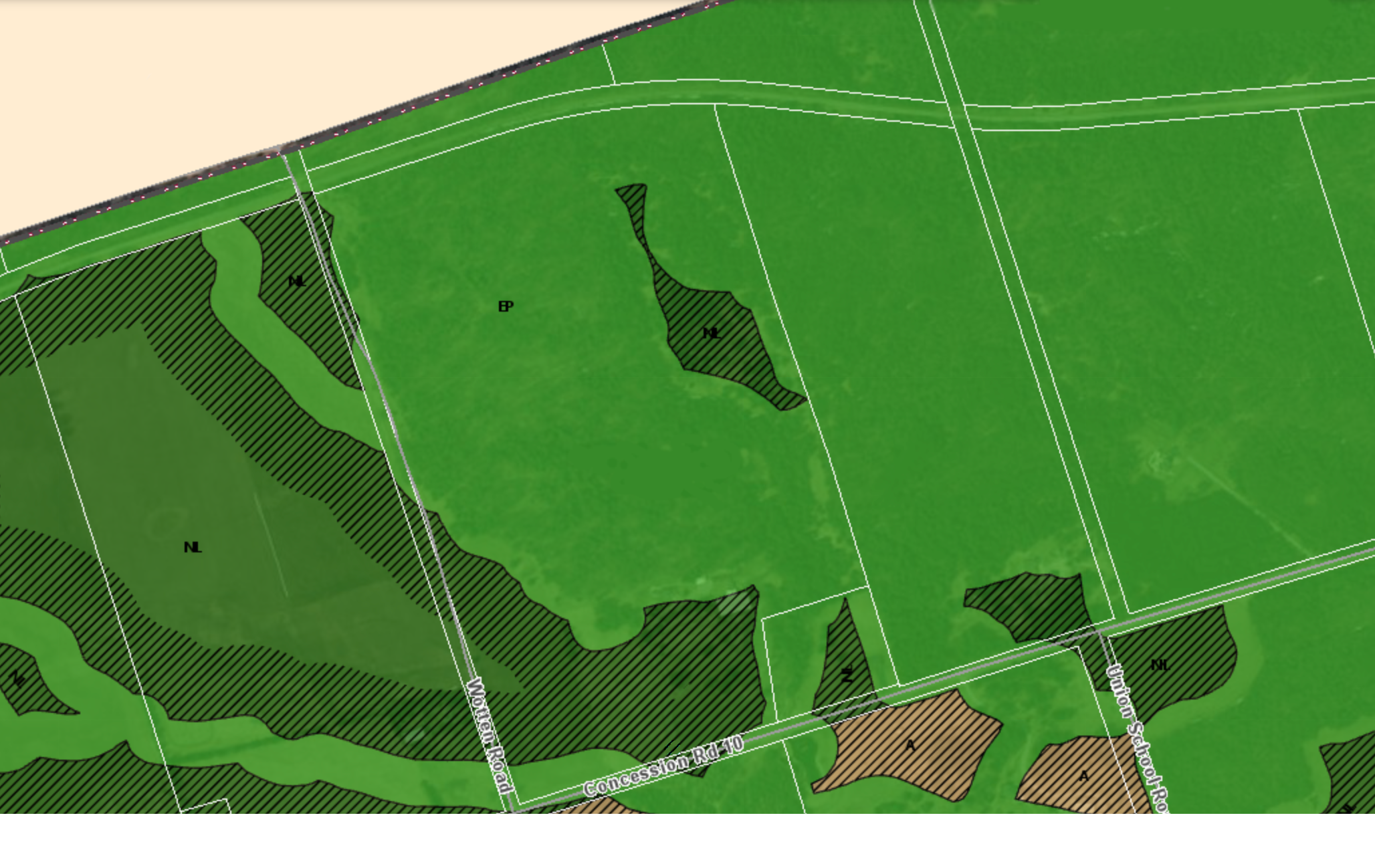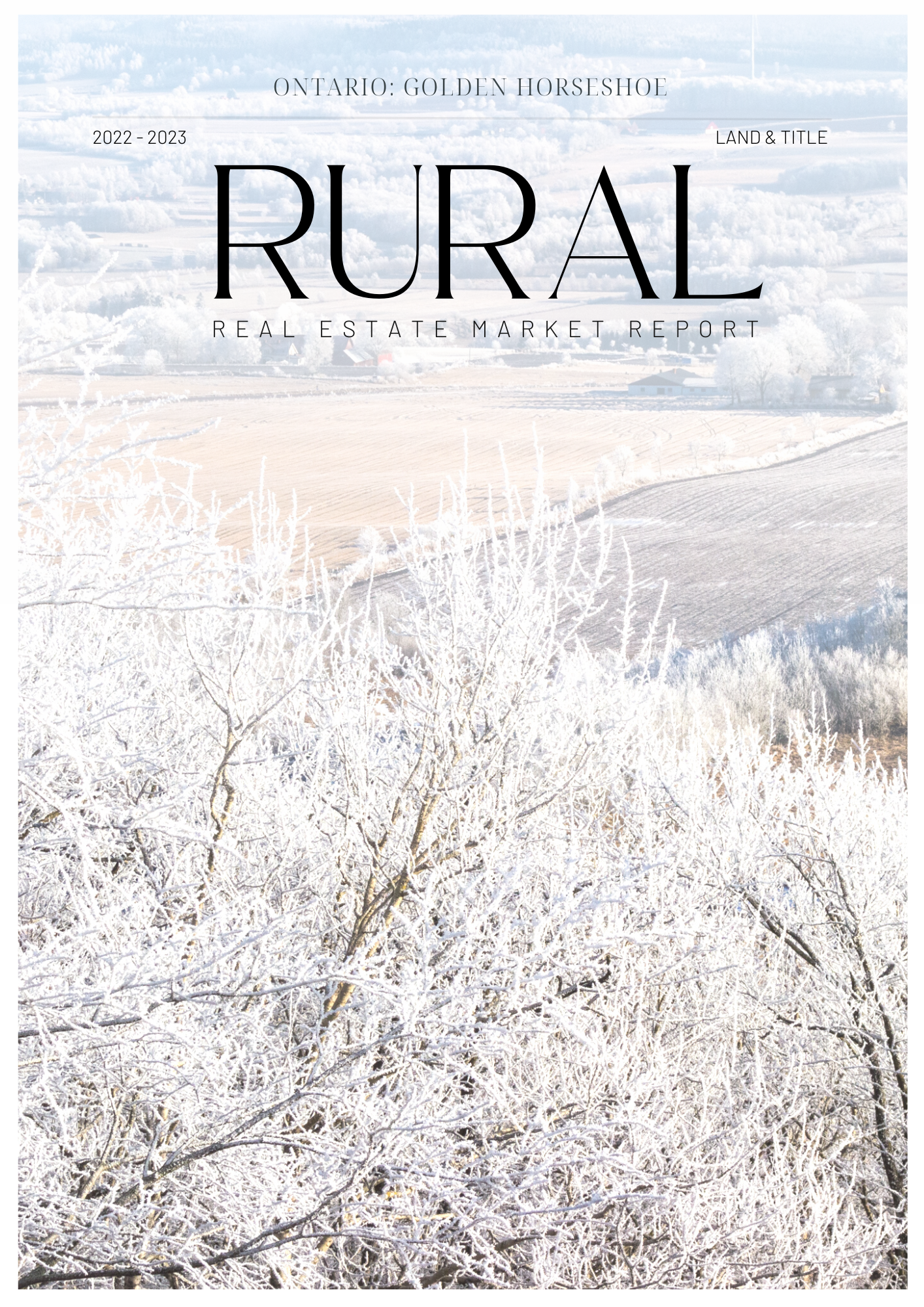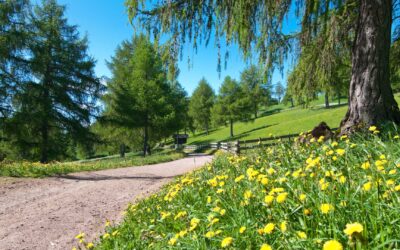If you’re buying a rural home there’s a good chance you have a serious appreciation for nature, green spaces and wildlife. You may also have an affinity for protecting those spaces.
It is not uncommon for rural homes to come with a section that is protected by environmental zoning. In fact, 95% of Ontario’s population lives in a watershed managed by a Conservation Authority. Each environmental protection authority or protected area having its own requirements, restrictions and at times, prohibitions.
There are 31 Conservation Authorities operating in Southern Ontario. Conservation authorities that would govern over an Environmentally Protected (EP) or Environmental Conservation (EC) zoned area include examples such as the Niagara Peninsula Conservation Authority, Grand River Conservation Authority, Halton Conservation and the Kawartha Lakes Conservation Authority. As you might have guessed, each one has its own jurisdiction ensuring the protection of environmentally significant areas in their area. They do so through the conservation, restoration and responsible management of Ontario’s water, land and natural habitats through programs that balance human, environmental and economic needs.
At times, a property may have a registered conservation easement on the land. If one is registered on the property in question you would have to adhere to what has been stipulated in this easement. For instance, some conservation easements restrict the building of any type of building on the property. Properties with conservation easements aren’t as common as properties with simply environmental zoning or conservation protections, but it is always a good idea to check.
With that out of the way, here are some important points about owning a property with environmental or conservation zoning classifications.
There May Be Land Use Restrictions
These restrictions can include things like:
- Farming – as a way to limit the amount of potentially hazardous runoff or chemical sprays that could damage the surrounding environment. Some EP zoning can even go so far as to limit all agricultural activities.
- Tree cutting – except for maintenance or limited personal use. Commercial tree cutting in this type of zone is often prohibited.
- Subdividing or Severing – this is often the case if the property is located in a significant area such as the Greenbelt, Niagara Escarpment Zone or Oak Ridges Moraine Zone.
- Building – this can be of any type within the environmentally protected zone. More on this below.
We recently had a client inquire about a very picturesque property in West Lincoln. It did have an existing home on it, however, this home was run down and not considered liveable at the time. Before setting up a showing we did some digging into the zoning,
According to the town, because the property is entirely zoned with environmental protections, one cannot develop the property in any way. There is an existing house on the property that is considered legal-non conforming. In order to alter this existing home, your would need planning approval to do so. If someone wanted to say demolish the existing house and build a new one, you would need to either request a minor variance or apply for re-zoning. Both of which can be expensive and don’t necessarily guarantee success.
Environmental Conservation (Light Grey) and Environmental Protection (Dark Grey).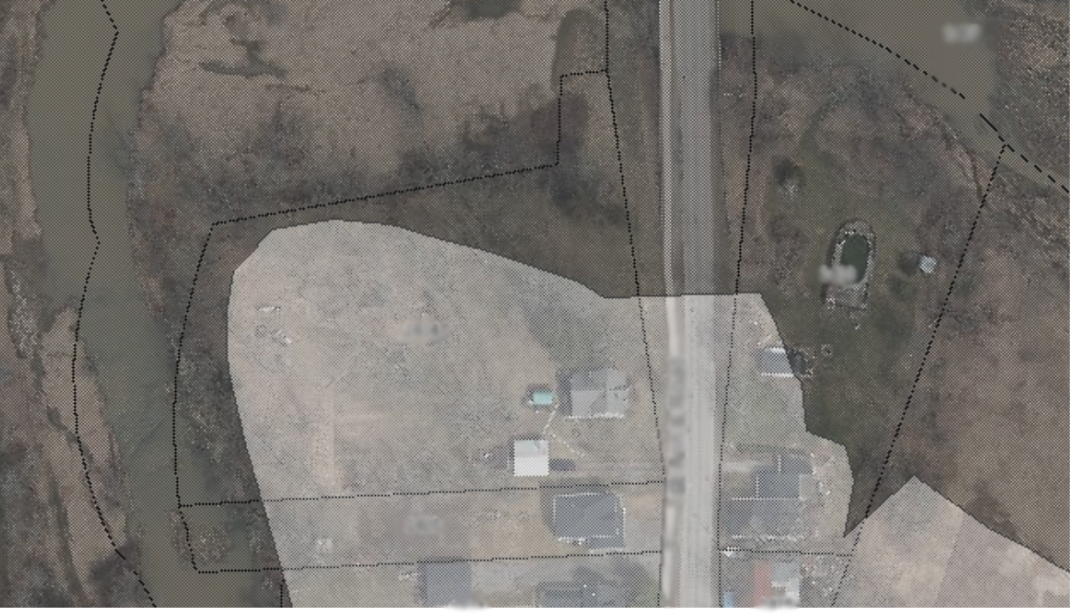
There May Be Building Restrictions
Typically, a property with an existing dwelling in an EP zone can be altered with permission from the local municipality and (importantly) the local conservation authority. Alternatively, the EP zone may not cover the entire property and the parts that are not considered EP or EC can be built on while adhering to restrictions of the other zone classifications (commonly Rural, Residential, Agricultural, etc.).
Here is an example:
The below image shows properties that have environmental protections as portions are considered to be Provincially Protected Wetlands. The main blue shows the protected areas while the more transparent blue shows a 30-meter non-interference buffer. The rest of the image shows mixed zoning with the primary being A-Agricultural. According to the NPCA, one cannot build any type of structure in the blue zone or the 30-meter buffer zone.
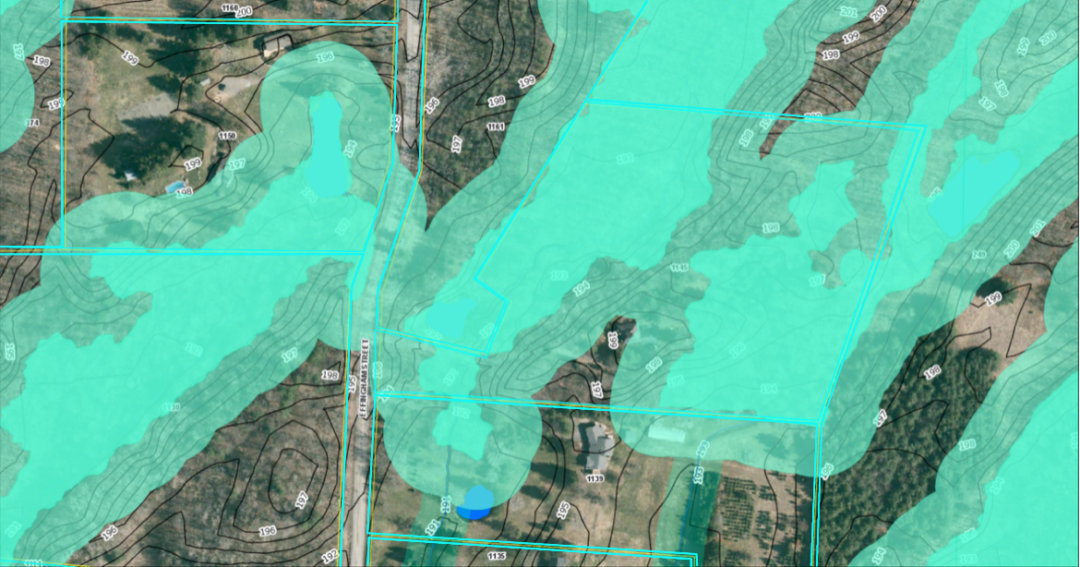
It is especially important to do your due diligence on vacant land to ensure you can build your dream home on the property. If a vacant land property is entirely EP or EC and restricts the building of any kind, you would likely have to seek a zoning change. This can cost thousands of dollars and does not guarantee success. It is also strongly advised that your lawyer ensure there are no registered conservation easements on the property that prohibits building.
There Could Be An Impact on Property Value

When you are starting out on your rural home search you should always be thinking about the perceived future value of the property to other buyers.
It might be surprising to think that sometimes conservation zoning can have a negative impact on the value of the property. This depends strictly on how much of the land is considered protected, how it is protected and how restrictive the zoning regulations are. As with the above two examples, buyers may shy away from these types of properties if they are unable to use the land to say build a small barn or have a few farm animals on the property. Even more would be reluctant of having to apply for rezoning.
This is especially true with vacant land. All other things being equal – a vacant property that is entirely protected by a conservation easement preventing any building, of any kind, just isn’t going to fetch nearly as much as a similar property that allows for a home to be built on it.
On the other hand, an environmentally protected property can also add value to its owner or potential buyers. For instance, if the property has buildable land (or has an existing home on it) and space for other outbuildings, yet conservation has resulted in a beautiful forest growing at the back of the property, a clean stream running through it or wildlife protection, this would likely be perceived as valuable. This offers buyers land-use diversity while still providing the enjoyment of natural surroundings.
You May Need To Steward The Land
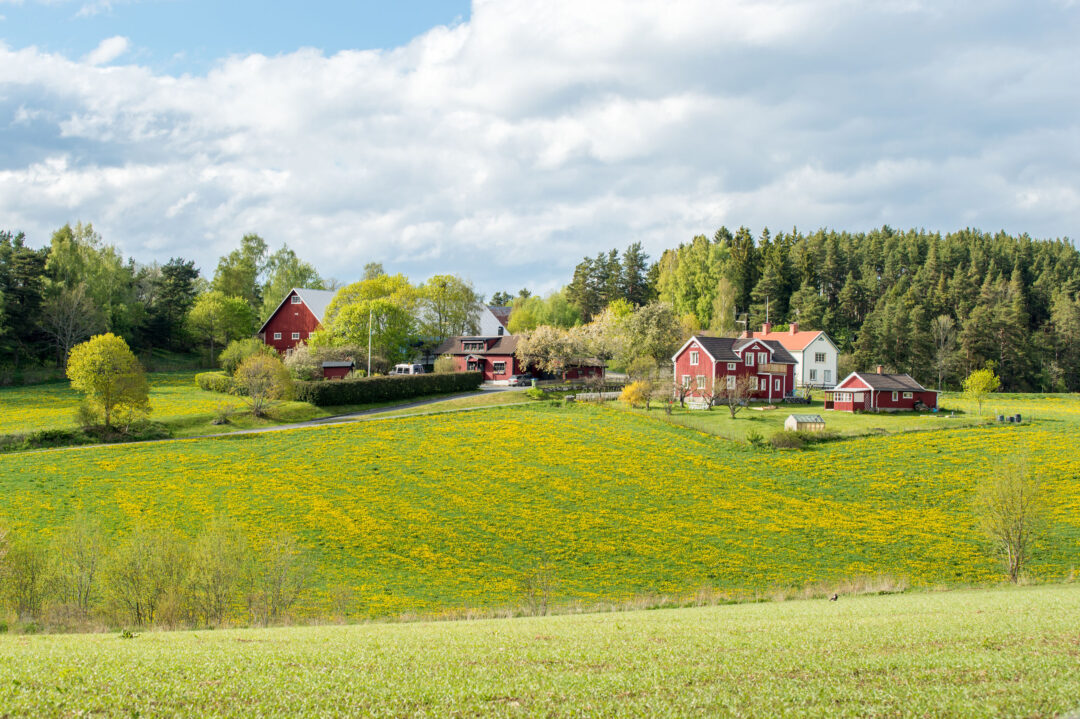
According to the Ministry of Natural Resources and Forestry, Many of Ontario’s most significant conservation lands are privately owned.
It is our belief that anyone owning a rural property should steward their land. By this we mean you should try to look after the property and pass it on better than you had it. Maintaining forests, green spaces and conserving wildlife are some examples of how to do this.
It is even more important (if not mandatory) that if you own a property that is under environmental protection you look after the land. This means you may need to control manure run off with correct storage, control and remove invasive plant species, plant native species, possibly tree felling, maintain open spaces, and more.
There Could Be Possible Tax Benefits
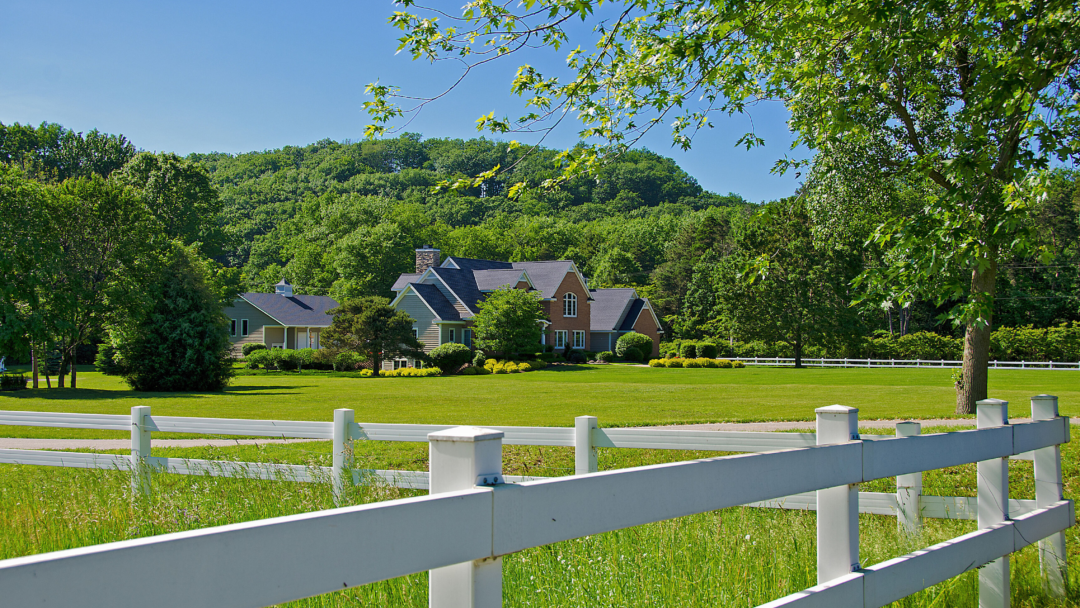
There may be tax benefits to owning an environmentally protected property. However, one needs to meet very specific requirements in order to qualify.
For example, if you own a large enough property with a forest, and meet certain eligibility requirements, you may qualify for the Managed Forest Tax Incentive Program (MFTIP). People who qualify for this program can only pay 25% of the municipal tax rate set for residential properties. This is a voluntary program where as a landowner you commit to being a steward of your own forest and as a reward for this you get a reduction in your property taxes.
You can read more about the Managed Forest Tax incentive Program here.
Another possibility is the Conservation Land Tax Incentive Program. This program is a little more “exclusive” shall we say. In order to qualify your property or a portion of your property, you will need to meet certain conservation criteria and be accepted. Similar to the MFTIP, this is a voluntary program. However, one difference with this program is that areas are identified, and approved by the Ministry of Natural Resources and Forestry (MNRF) only. Also, you cannot turn your property into a naturally significant area.
You can read more about the Conservation Land Tax Incentive Program here.
____
As a final but important note, make sure to check zoning with your local municipality. Do not rely on the listing information and do not take the listing agent’s word for it. This goes to both cooperating agents and you as the buyer. It doesn’t take much to contact the local municipality. They are usually happy to provide you with information and can provide clear maps, information and details about what can or cannot be done on a property.
This article does not constitute legal advice. When questions arise based on specific situations, direct them to a knowledgeable attorney.

